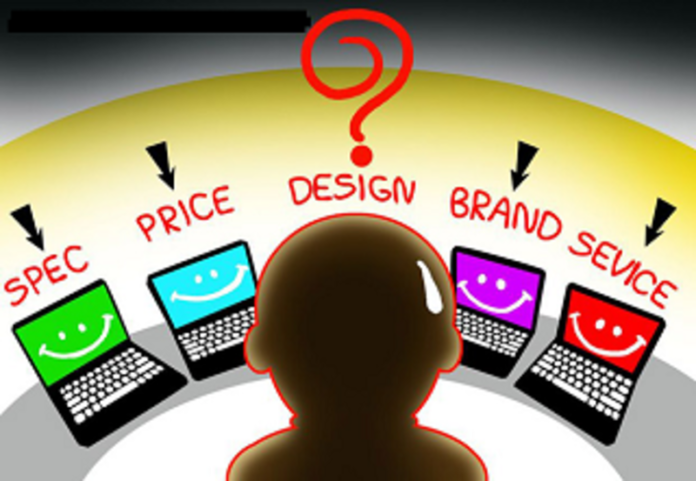
What Type of RAM Should I Use?
Just like processors and its cores, which help the processor multi-task, the Random Access Memory (RAM) is an extra fast form of basic memory effecting the multi-tasking of your machine. So the larger amount of RAM equals the better your computer can multi-task.
Fundamentals: In recent years, RAMs use to come in MB’s, but now it’s more about Gigabytes. And by having more of that RAM juice, your system is able to access data with quick efficiency, rather than drag its feet. RAM equates to the easy running of many background tasks without compromising desktop/laptop performance.
Furthermore, there is more to the RAM than just size and speed. For instance, a DDR2 type 400 is slower than DDR2 type 800 – as the last number speaks about the data transfer rate. However, like your processor, the RAM also has clock speed, and naturally, the faster it is, the better they perform.
However, the speed of the RAM can be limited by the system’s motherboard. So, if you decide to get a RAM that is made for gaming, then ensure your motherboard uses its full potential, otherwise you’re wasting your money.
What Type Hard Drive Is Good For Me?

Without the hard drive or hard disk, you simply cannot store anything on your system. When it comes to hard drive storage options, it all depends on how you are going to use your machine.
Fundamentals: If you have a laptop that does not have any input devices (limiting to USB ports, card readers, etc) than opt to go for a laptop with a large hard disk (in gigabytes or even terabytes of extra space), as you will not have the option to get your data transferred. However, if you plan to keep your machine for a very simple use – as in no media contents or no heavy applications – than a hard drive with average capacity will suffice; also saving you some money.
Furthermore, the size of the disk drive is one way to look at it, but then consider the factor of the disk drive spinning speed, as well. Like everything discussed so far, the heavier the numbers, the better it is. In this case, the faster the disk in the hard drive is spinning, the faster it will encode the data on it. So naturally, if you compare a hard disk drive that has the spinning speed of 7200 rounds per minute compared to the one giving 5400 rounds per minute, then the first one is faster.
However, if you are planning to keep heavy software on your primary hard drive, and plan on keeping your media on a solid state drive or a flash drive, then you should also consider the media/data transfer rate and bandwidth, again, the higher the rate of data transfer, the better.
Do I Need Those Extra Features On My Machine?

Those six and four USB slots on the back of some desktops and laptops are there for a reason. Maybe you have a lot of solid state drives and you want to connect all your flash drives to your system; or you have a USB dongle device that needs to stay connected in one USB port(s) permanently. On the contrary, you may need USB slots to do the job. It might also be, you want little to no USB slots because your cat has a habit of spilling your coffee. The choice is yours.
Universal Serial Bus – This is a highly used feature, for the USB keyboard and mouse to more complex PLC machines, all of which can be connected via a USB. The new USB Type-C allows data transfers at an impressive rate of more than 1 gigabyte every second, and has the ability to supply power to a standard laptop. Eventually, all devices will have a USB Type-C unit to connect them all, so it’s a good thing if your system supports one. If you are planning to transfer a lot of data to remote devices, then go for a machine or motherboard that has a USB 3.0 or USB Type-C slot in them.
High Definition Multimedia Interface – Or commonly known’s as HDMI, is one of those must-have features if using your system for entertainment purposes. This feature allows you to connect your desktop/laptop to smart TV’s and projectors, displaying the maximum graphics and sound output.
Wi-Fi – Nowadays a laptop without a Wi-Fi is a relic, but if using a desktop and you want to connect to your network without paying your internet service provider extra dollars for the cables and labour fee, then getting a Wi-Fi card in your desktop, or even an external Wi-Fi receiver, is beneficial.
Bluetooth – Bluetooth is a feature now commonly found on laptops. However, in desktops not so much. If you are planning on going all wireless, then Bluetooth is one of those must-have components. From connecting wireless headphones to enjoying a home theatre, this technology can definitely save the mess that comes with wires hanging across the room.
Security Digital Slot – Also known as an SD Slot, this allows users to transfer large files from your system onto a card, such as transferring photos from your camera to your machine. Also, the SD Card can increase your system’s overall memory. Click here to learn more.
Part 1: Things to Know when Buying a New Computer – Desktops, Laptops & Processors
Part 3: Things to Know when Buying a New Computer – Operating Systems & Graphics Cards
You want to support Anonymous Independent & Investigative News? Please, follow us on Twitter: Follow @AnonymousNewsHQ
This article (Things to Know when Buying a New Computer – P2: RAMs, Hard Drives & Features) is a free and open source. You have permission to republish this article under a Creative Commons license with attribution to the author and AnonHQ.com.




